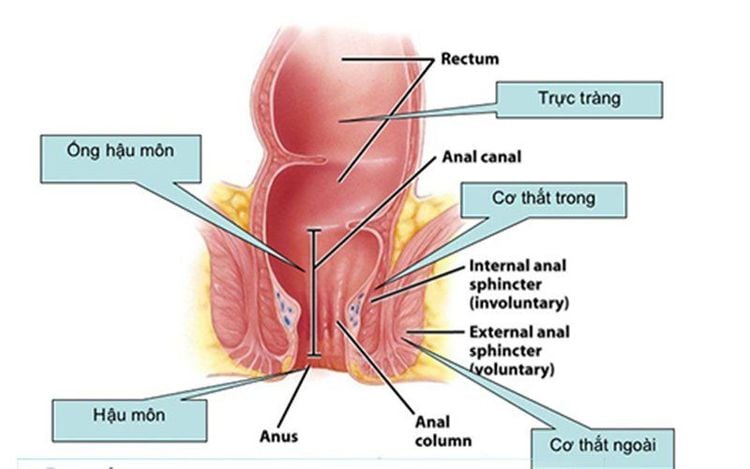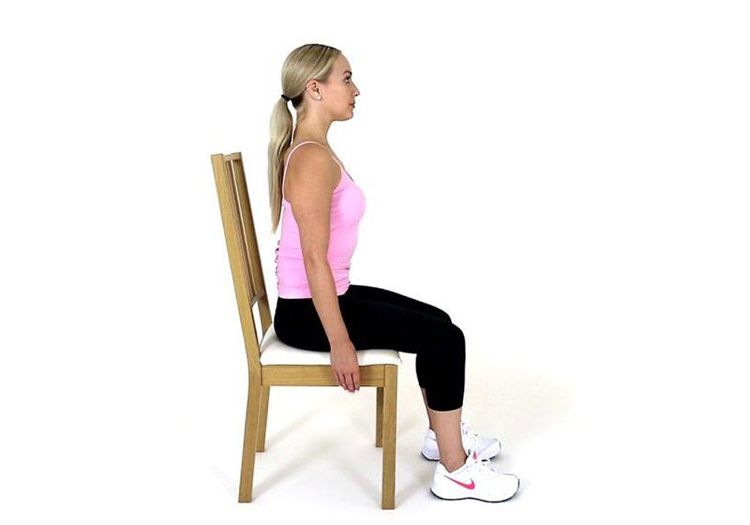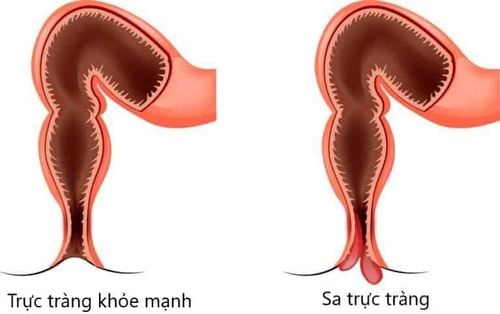This is an automatically translated article.
People with urinary incontinence or fecal leakage can be helped by doing special exercises to strengthen the sphincter. With regular practice, exercises can help build your muscles. Check with your health professional to see if these exercises help you. Read this guide to better understand how to exercise the anal sphincter for people with bowel control problems.
1. Tighten your anal sphincter
In the anus, there are 2 surrounding muscle rings, the inner ring is the inner muscle ring – the involuntary muscle. This is a component of the intestinal wall that is normally closed all the time, unless you actually try to open it, which is usually automatic without thinking to do it.
Outside of that sphincter is the external sphincter – an involuntary muscle that you can tighten to close it more to prevent emergencies or diarrhea. The mechanism of action of the muscles, when stool enters the rectum, the internal sphincter relaxes and allows stool to pass into the anus. Very sensitive nerves in the anal canal can tell you it's gas or stool in the anal canal. A signal will be sent to the brain that the rectum is full and you can make the decision to go to the toilet or not. If going to the bathroom is inconvenient, you can consciously contract the outer sphincter and push the stool movement back into the rectum. There is an additional muscle for this, the anorectal muscle. Any of these muscles can become weak, preventing the anus from closing completely and thus causing leakage. If the internal sphincter is not working then you may have an unwarranted leak. If the external sphincter is weak, you may not be able to hold on to go to the bathroom and may leak gas, liquid, or even solid stools. Injury can occur during childbirth, especially for vaginal delivery. Constipation and stress can also cause weakness. In addition, muscles weaken with age due to general aging as well as hormonal changes. Bowel surgeries can also affect the way these muscles work, or sometimes there's no obvious cause.
The first thing to do when having trouble with gas or stool leakage is to see a doctor for advice and medical examination. New cases always have to be carefully evaluated with some tests like EMG, ultrasound... appropriate.

Cơ vòng hậu môn gồm có 2 loại: cơ không tự chủ và cơ tự chủ
2. Sphincter training guide for people with bowel control problems
Anal sphincter exercises can strengthen this muscle to aid in bringing them back. This helps in better control of your bowels, improving or stopping gas or stool leakage. Like any other muscle in the body, the more you use and train them, the stronger they become. It's important to learn how to exercise properly and to check regularly that you're still doing it right. Here's how to do the exercise:
Step 1: Sit comfortably with your knees slightly apart
Step 2: Now imagine that you are trying to prevent gas from passing through your intestines. To do this, you must tighten the muscles around the anus.
Step 3: Try to squeeze and lift that muscle as tight as possible, as if you're really worried that you're about to leak. You should be able to feel the muscle moving. Your buttocks, abdomen and legs should not move at all.
Step 4: You should notice that the skin around the anus tightens and is pulled up and out of your chair. Let's really try to feel this. You are now exercising your anal sphincter. You don't have to hold your breath while tightening the muscles!
Step 5: Now imagine that the sphincter is a lifting force. As you squeeze as hard as you can, your lift will increase. But you can't keep it there for too long, and it won't get you to the toilet safely because it gets tired very quickly. So squeeze more gently now, lifting only up to the point where you feel you can hold it longer than at maximum pressure.

Các bài tập cơ vòng cải thiện tình trạng sa trực tràng và giúp bạn kiểm soát ruột tốt hơn
Note when practicing
Sit, stand or lie with your knees slightly apart. Slowly tighten and pull the sphincter up as tight as possible. Hold this tightening for at least five seconds, and then relax for about four seconds. Repeat five times. This will work on the strength of the muscles. Next, pull the muscles up to about half their maximum. See how long you can keep it. Then relax for at least 10 seconds and repeat 2 times, this will work on endurance and maintenance. Pull the muscles up as fast and tight as you can and then relax and then pull up again, and see how many times you can do this before you get tired. Try for about five quick pull-ups. This will work based on the response of your muscles. Do these five exercises as hard as you can, as long as two you can and five quick pull-ups. Four to six times per day. As your muscles get stronger, you'll find that you can hold for more than five seconds and you can pull more each time without muscle fatigue. It is very helpful if you do these exercises both sitting and standing as working against gravity will help strengthen the muscles. It takes time to exercise to help strengthen muscles. You may need to exercise regularly for several months before your muscles reach their full strength. It takes time to get these exercises right at first. But very soon they will soon become easy to do anywhere. If you're not sure you're working the right muscle, put your finger in your anus as you squeeze to check. You'll see a gentle lift and squeeze if you're working the right muscles, or you can look at this area in the mirror - you'll see the anus crinkle when you squeeze it. During weight training, weight gain will put extra strain on your muscles. Once you have regained control of your bowels do not forget to maintain the exercises, continue to do them several times per day to ensure that the problem does not return.
Please dial HOTLINE for more information or register for an appointment HERE. Download MyVinmec app to make appointments faster and to manage your bookings easily.
References: verywellhealth.com, uhb.nhs.uk













